Surya Namaskar B (Sun Salutation B) is the second foundational vinyasa sequence in the Ashtanga Yoga tradition. After Surya Namaskar A introduces the breath-motion connection, this deeper and slightly more demanding sequence builds strength, stamina, and spiritual awareness.
Each pose in Surya Namaskar B aligns with breath and can be spiritually enriched with the 12 sacred Surya mantras—invocations to the sun’s divine qualities. This blog walks you through each pose with its Sanskrit name, breathing cue, Surya mantra, and unique benefits.
💡 Recommended: Begin your practice with 3–5 rounds of Surya Namaskar A to warm up.
🔁 Full Sequence Overview
The full Surya Namaskar B includes 17 positions (some repeated), with right and left sides practiced equally.
1. Samasthitih (Equal Standing Pose)

Breath: Normal
Mantra: Om Mitrāya Namaḥ – Salutations to the friend of all.
Meaning & Benefits:
Begin in stillness. This posture centers your awareness, aligns your body, and symbolizes respect for the sun and life itself.
2. Utkatāsana (Chair Pose)
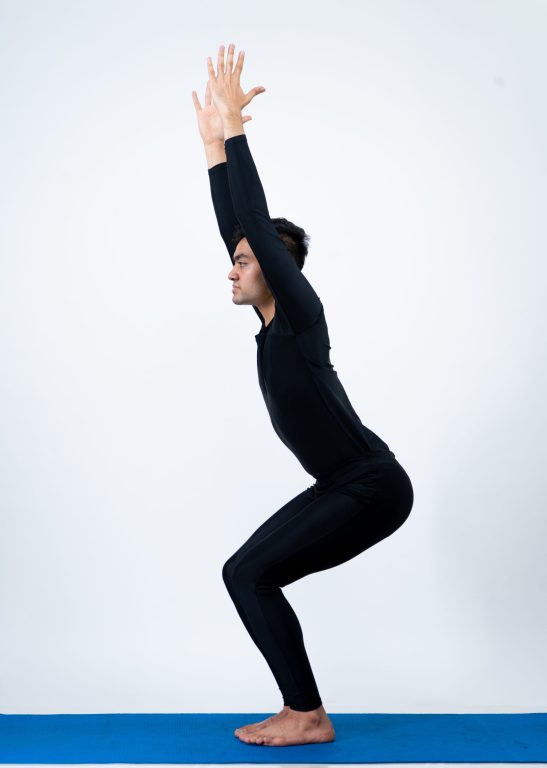
Breath: Inhale
Mantra: Om Ravaye Namaḥ – Salutations to the shining one.
Meaning & Benefits:
A deep squat with arms overhead, this pose ignites the core and thighs. It builds lower body strength, enhances posture, and activates the Manipura (solar plexus chakra).
3. Uttānāsana (Standing Forward Bend)
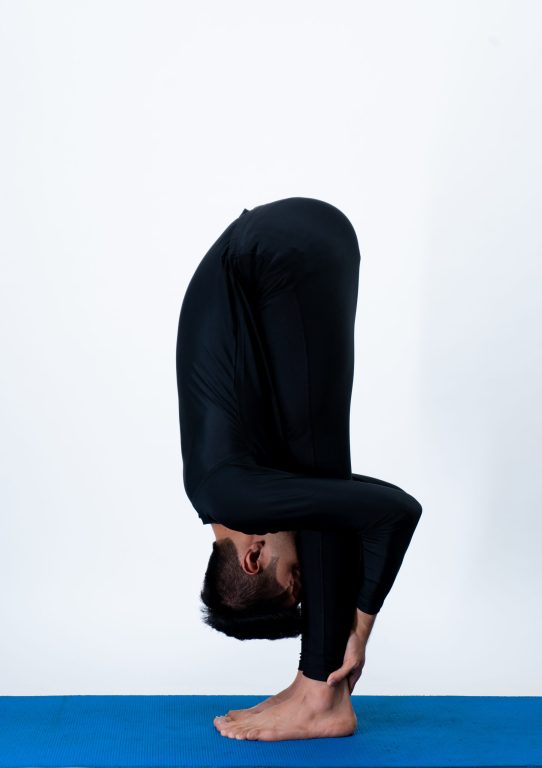
Breath: Exhale
Mantra: Om Sūryāya Namaḥ – Salutations to the dispeller of darkness.
Meaning & Benefits:
This forward fold releases tension from the spine, neck, and hamstrings. It calms the nervous system and stimulates digestion.
4. Ardha Uttānāsana (Halfway Lift)
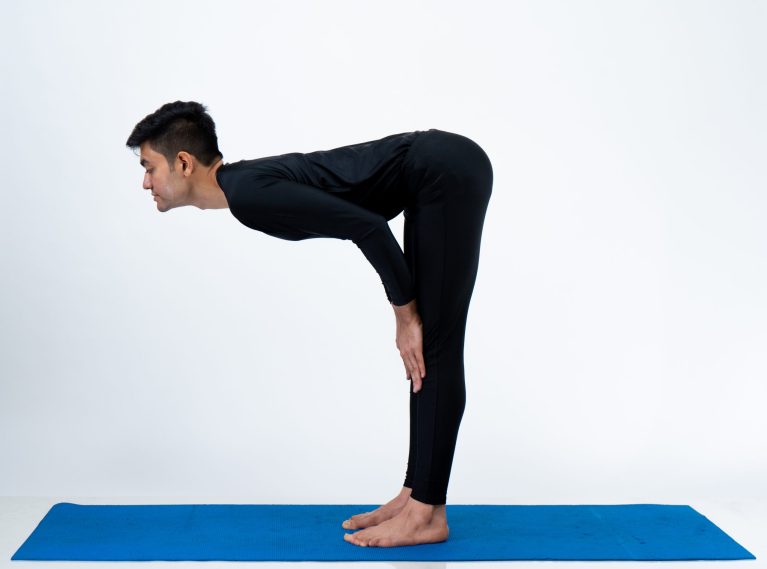
Breath: Inhale
No mantra chanted here (transition position)
Meaning & Benefits:
A flat-back lift energizes the spine and prepares the body for the jump back or step back into plank. Enhances postural alignment and core engagement.
5. Chaturanga Daṇḍāsana (Four-Limbed Staff Pose)

Breath: Exhale
Mantra: Om Bhānave Namaḥ – Salutations to the illuminator.
Meaning & Benefits:
This low plank pose strengthens the arms, chest, and core. It builds willpower and teaches control and precision.
6. Ūrdhva Mukha Śvānāsana (Upward-Facing Dog Pose)
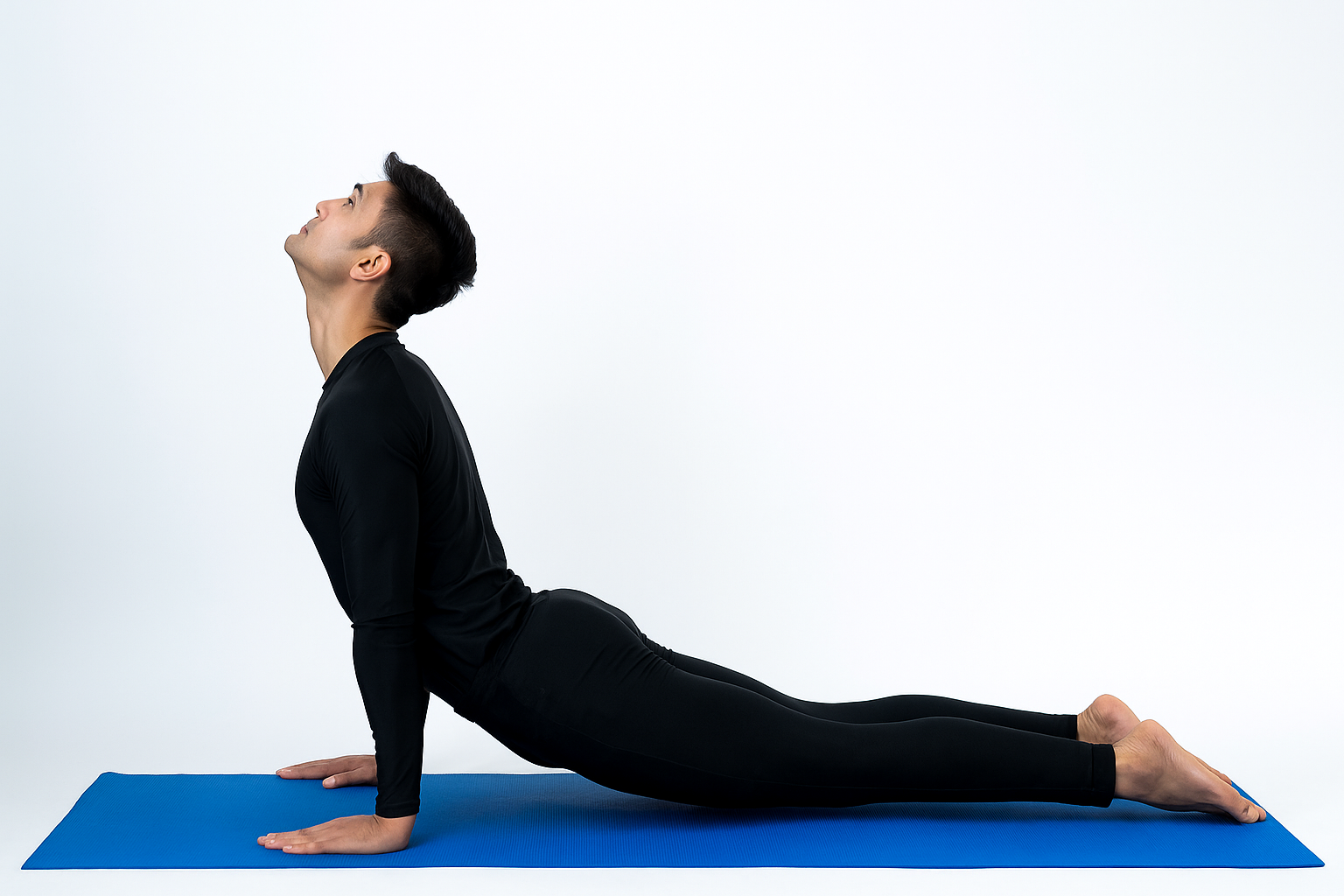
Breath: Inhale
No mantra chanted here
Meaning & Benefits:
A heart-opening backbend that expands the lungs, stretches the chest and hip flexors. Awakens energy and vitality.
7. Adho Mukha Śvānāsana (Downward-Facing Dog Pose)
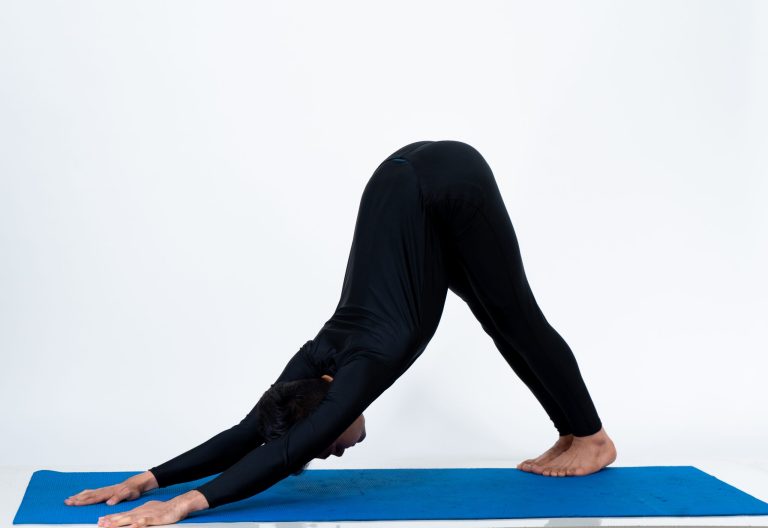
Breath: Exhale
No mantra chanted here
Meaning & Benefits:
This inverted “V” pose lengthens the spine, improves circulation to the brain, and resets the nervous system. Strengthens shoulders and balances body energy.
8. Virabhadrāsana I (Warrior I – Right Side)
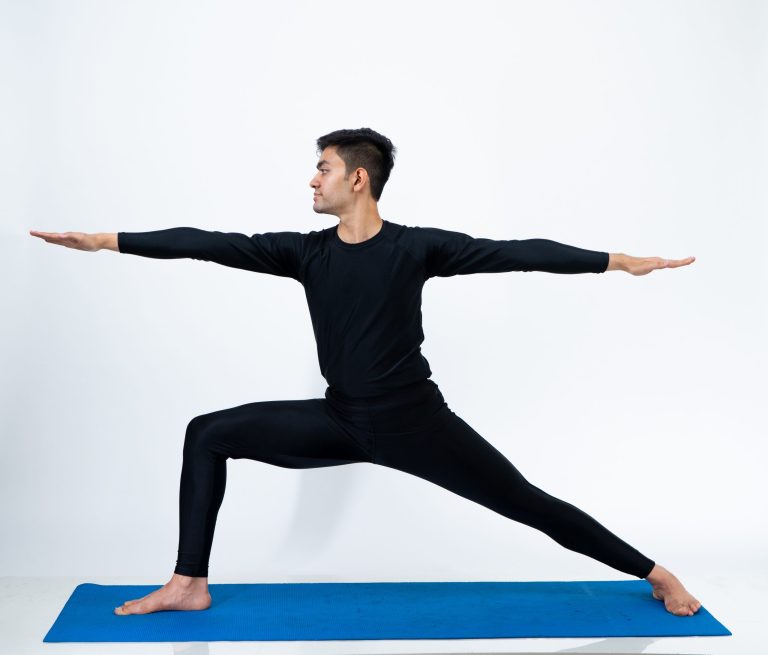
Breath: Inhale (Right leg steps forward)
Mantra: Om Khagāya Namaḥ – Salutations to the one who moves through the sky.
Meaning & Benefits:
Named after the warrior of Lord Shiva, this pose symbolizes courage and focus. It opens the hips, tones the legs, and strengthens willpower.
9–11. Vinyasa (Repeat Chaturanga, Upward Dog, Downward Dog)
Breaths: Exhale → Inhale → Exhale
No additional mantras
These transitions build heat, increase stamina, and maintain the rhythm of the practice.
12. Virabhadrāsana I (Warrior I – Left Side)
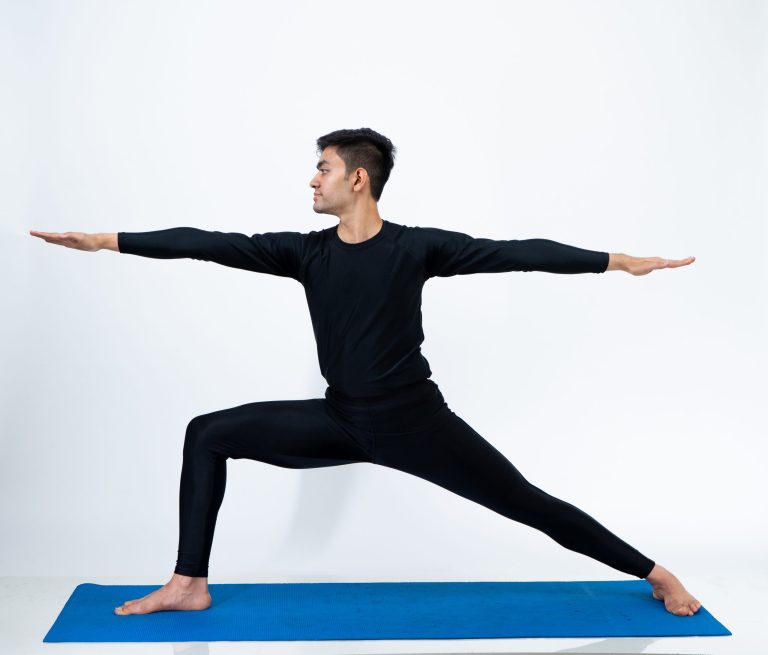
Breath: Inhale (Left leg steps forward)
Mantra: Om Puṣṇe Namaḥ – Salutations to the giver of nourishment.
Meaning & Benefits:
Balancing both sides of the body, Warrior I on the left improves coordination, opens the heart, and deepens focus.
13–15. Repeat Vinyasa to Downward-Facing Dog
Breath: Exhale → Inhale → Exhale
Then hold Downward Dog for 5 deep Ujjayi breaths.
16. Uttānāsana (Standing Forward Bend)
Breath: Exhale
Mantra: Om Marīcaye Namaḥ – Salutations to the lord of the dawn.
Meaning & Benefits:
Returning to this pose allows a release of tension and reconnects you to the earth and breath.
17. Utkatāsana to Samasthitih (Chair Pose back to Standing)
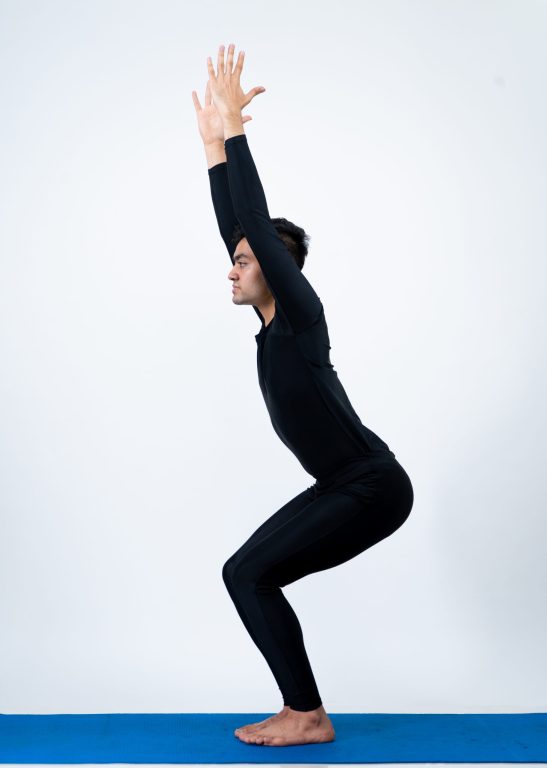
Breath: Inhale into Utkatāsana, Exhale to Samasthitih
Mantra: Om Ādityāya Namaḥ – Salutations to the son of Aditi, the cosmic mother.
Meaning & Benefits:
Close the sequence with the same reverence as you began. This closing gesture locks in the pranic energy cultivated throughout the flow.
🌟 Overall Benefits of Surya Namaskar B
- Full-body Strengthening – Arms, shoulders, legs, and core are all engaged.
- Enhanced Lung Capacity – Ujjayi breath improves respiratory health.
- Mental Clarity & Focus – The sequence requires and develops single-pointed awareness.
- Spiritual Elevation – With mantras, it becomes a form of devotion.
- Improved Digestion & Circulation – Dynamic flow increases internal heat.
- Emotional Balance – Releasing stress through posture and breath.
📿 Chanting Surya Mantras: An Optional Enrichment
Although not required in every practice, chanting one Surya mantra per pose (or each round) brings sacredness and intention to the flow. It connects you to the ancient Vedic roots of yoga.
You can download a printable list or audio track from Ojaswin’s resources section (suggest to add this in the future).
🧘 How Many Rounds to Practice?
| Practitioner Level | Suggested Rounds |
| Beginner | 1–2 rounds |
| Intermediate | 3–4 rounds |
| Traditional | 5 rounds (after 5 of Surya A) |
| Special Occasions | 12 or 108 (equinox, yoga day) |
🔗 Also Read:
👉 Ashtanga Surya Namaskar A – A Journey Through Breath, Movement & Inner Radiance
🌅 Conclusion: A Flow That Awakens the Warrior Within
Ashtanga Surya Namaskar B is not merely a set of postures—it’s a ritual of awakening, a practice that combines heat, harmony, and humility. Through it, we salute the sun within and around us, invoking balance between effort and surrender.
Practice regularly with intention, breath awareness, and reverence—and witness your inner radiance rise like the sun itself.
Poses images credit :https://pixahive.com/


